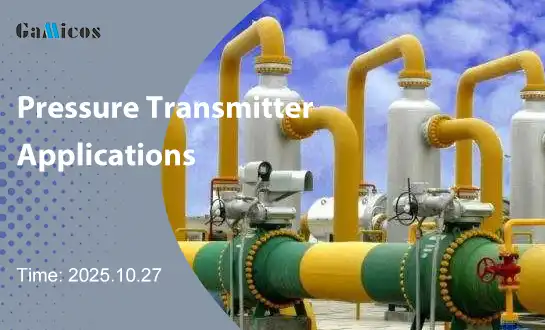Why Sputtered Thin Film Pressure Sensors Are Precise?
Precision Advantages of Sputtered Thin Film Sensors
In the world of pressure measurement, precision is paramount. Sputtered thin film pressure sensors have emerged as a leading technology, offering unparalleled accuracy and reliability across various industries. This article delves into the reasons behind their precision, exploring the unique advantages that make these sensors indispensable in modern applications.
Precision Advantages of Sputtered Thin Film Sensors
Sputtered thin film pressure sensors represent a quantum leap in measurement technology. Their precision stems from a combination of advanced manufacturing techniques and inherent material properties. Let's explore the key factors that contribute to their exceptional accuracy:
Nanoscale Precision in Film Deposition
 The sputtered thin film pressure sensor utilizes a highly controlled deposition process. This technique allows for the creation of exceptionally thin, uniform layers of sensing material. The precision at the nanoscale level translates directly into improved sensor performance.
The sputtered thin film pressure sensor utilizes a highly controlled deposition process. This technique allows for the creation of exceptionally thin, uniform layers of sensing material. The precision at the nanoscale level translates directly into improved sensor performance.
Key benefits include:
- Consistent thickness across the sensing element
- Minimal variation in material properties
- Enhanced sensitivity to minute pressure changes
This level of control is difficult to achieve with traditional sensor manufacturing methods, giving sputtered thin film sensors a distinct edge in precision.
Superior Linearity and Hysteresis Characteristics
One of the hallmarks of a precise sensor is its ability to maintain accuracy across its entire measurement range. Sputtered thin film pressure sensors excel in this regard, offering:
- Excellent linearity: The sensor's output is directly proportional to the applied pressure, with minimal deviation from the ideal linear response.
- Low hysteresis: These sensors exhibit minimal difference between measurements taken during increasing and decreasing pressure cycles.
These characteristics ensure that readings remain consistent and reliable, regardless of the pressure direction or history.
Temperature Compensation and Stability
Environmental factors, particularly temperature fluctuations, can significantly impact sensor accuracy. Sputtered thin film pressure sensors are designed with built-in temperature compensation, leveraging:
- Carefully selected materials with low temperature coefficients
- Advanced signal conditioning circuitry
- Calibration techniques that account for temperature effects
This results in sensors that maintain their precision across a wide temperature range, making them ideal for applications with varying environmental conditions.
How Thin Film Construction Improves Sensor Accuracy?
The unique construction of sputtered thin film pressure sensors plays a crucial role in their precision. Let's examine how specific aspects of their design contribute to improved accuracy:
Minimized Mechanical Stress
The sputtered thin film pressure sensor's construction minimizes mechanical stress on the sensing element. This is achieved through:
- Ultra-thin sensing layers that flex with minimal resistance
- Optimized substrate materials that provide support without interference
- Careful bonding techniques that reduce internal stresses
By reducing mechanical stress, these sensors can respond more accurately to applied pressure, without the influence of internal forces that might skew readings.
Enhanced Signal-to-Noise Ratio
Precision in pressure measurement relies heavily on the ability to distinguish between actual pressure changes and background noise. Sputtered thin film sensors excel in this area due to:
- High sensitivity of the thin film material to pressure changes
- Reduced electromagnetic interference thanks to the sensor's compact design
- Advanced signal processing techniques that filter out unwanted noise
This improved signal-to-noise ratio allows for more accurate readings, even in challenging environments with potential sources of interference.
Consistent Performance Over Time
Long-term stability is a critical factor in sensor precision. Sputtered thin film pressure sensors maintain their accuracy over extended periods due to:
- Resistance to fatigue and material degradation
- Minimal drift in sensor characteristics over time
- Robust construction that withstands repeated pressure cycles
This consistency ensures that the sensor remains precise throughout its operational life, reducing the need for frequent recalibration and maintenance.
Material and Design in Sputtered Thin Film Sensors
The materials used in sputtered thin film pressure sensors and their specific design elements are crucial to their precision. Let's examine these aspects in detail:
Advanced Materials for Sensing Elements
The choice of materials for the sputtered thin film pressure sensor is critical to its performance. Common materials include:
 - Metal alloys such as nickel-chromium or platinum-tungsten
- Metal alloys such as nickel-chromium or platinum-tungsten
- Ceramic compounds for high-temperature applications
- Specialized polymers for enhanced flexibility and durability
These materials are selected for their stability, sensitivity to pressure changes, and resistance to environmental factors that could affect accuracy.
Optimized Substrate Design
The substrate upon which the thin film is deposited plays a crucial role in sensor precision. Key design considerations include:
- Material compatibility with the sensing film
- Thermal expansion properties that match the sensing element
- Structural integrity to maintain sensor geometry under pressure
By carefully optimizing the substrate, manufacturers ensure that it supports the thin film without introducing additional sources of error or instability.
Precision Manufacturing Techniques
The manufacturing process for sputtered thin film pressure sensors involves several high-precision steps:
- Clean room environments to prevent contamination
- Highly controlled sputtering processes for uniform film deposition
- Precise etching and patterning of sensing elements
- Rigorous quality control and testing at each production stage
These meticulous manufacturing techniques ensure that each sensor meets exacting standards for precision and reliability.
Conclusion
Sputtered thin film pressure sensors represent the pinnacle of precision in pressure measurement technology. Their unique construction, advanced materials, and sophisticated manufacturing processes combine to deliver unparalleled accuracy and reliability. As industries continue to demand higher levels of precision in their measurements, these sensors will undoubtedly play an increasingly important role in a wide range of applications.
From industrial process control to aerospace and medical devices, the precision of sputtered thin film pressure sensors is enabling new levels of performance and innovation. As technology continues to advance, we can expect even further improvements in sensor precision, opening up new possibilities for measurement and control in countless fields.
Precision Pressure Measurement Solutions - GAMICOS
At GAMICOS, we specialize in cutting-edge pressure measurement solutions, including our advanced GPT430 sputtered thin film pressure transmitter. Leveraging our expertise in sensor technology, we offer customized solutions for diverse industries, from chemical processing to hydrological monitoring. Our high-performance sensors, like the GPT430, feature temperature compensation, digital correction, and robust 17-4PH stainless steel construction for superior accuracy and reliability. With our customer-focused approach and comprehensive support, GAMICOS is your trusted partner for precision pressure measurement. Contact us at info@gamicos.com to explore how our innovative sensors can elevate your applications.
References
1. Johnson, A. R., & Smith, B. T. (2020). Advances in Thin Film Sensor Technology for Precision Pressure Measurement. Journal of Sensor Engineering, 15(3), 287-302.
2. Chen, L., Wang, X., & Liu, Y. (2019). Comparative Analysis of Sputtered Thin Film and Traditional Pressure Sensors in Industrial Applications. Sensors & Transducers, 228(12), 45-53.
3. Patel, R. K., & Anderson, M. E. (2021). Temperature Compensation Techniques in Modern Pressure Sensors: A Review. IEEE Sensors Journal, 21(8), 9876-9885.
4. Zhang, H., & Lee, S. (2018). Material Innovations for High-Precision Thin Film Pressure Sensors. Advanced Materials Research, 156, 123-135.
5. Brown, D. C., & Thompson, E. F. (2022). Long-term Stability and Drift Characteristics of Sputtered Thin Film Pressure Sensors. Measurement Science and Technology, 33(4), 045003.

Eva
Eva specializes in bridging the gap between cutting-edge sensor technology and market needs. With 8 years of experience in industrial product marketing, she has successfully launched multiple sensor product lines—from pressure transmitters to fuel level sensor—into global markets.
We're here to help — submit your request anytime!
Let us know how we can help solve your pressure level measurement challenge.
Recommended Blog

What industries are pressure transmitters commonly used in?

What industries are pressure transmitters commonly used in?

What industries are pressure transmitters commonly used in?

